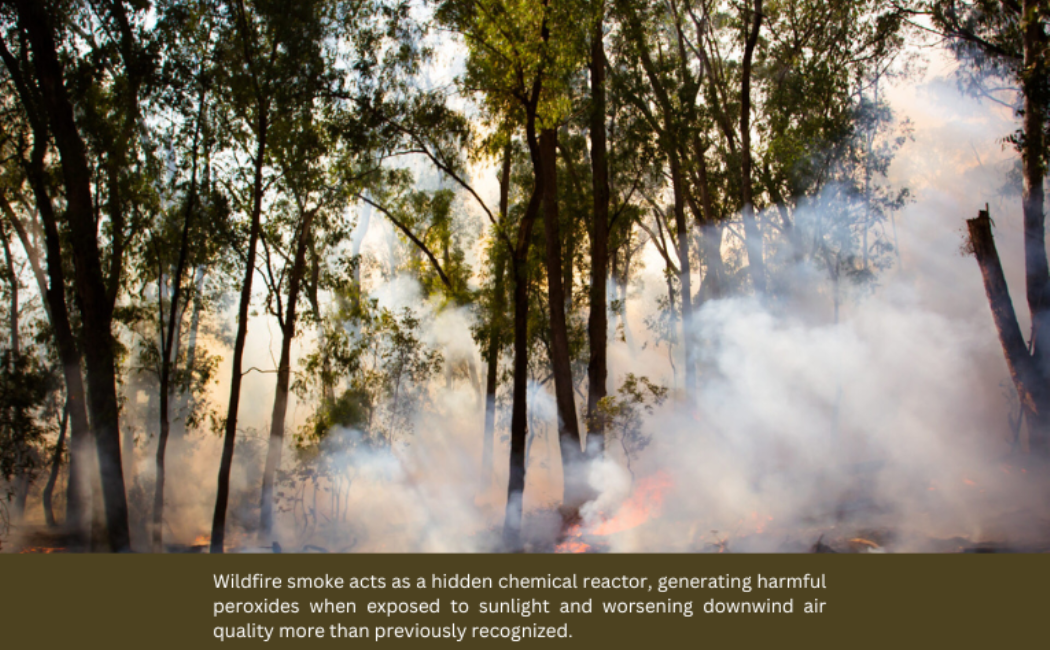


02 November, 2025
Wildfire smoke can have a far worse impact on the air quality of towns and cities downwind of the fire than previously thought, a new discovery in atmospheric chemistry suggests.
Urban residents living downstream of a forest fire are at direct respiratory health risk through inhaling airborne smoke particles. When these smoke particles are exposed to sunlight, however, they can drive a previously unrecognized chemical process that generates even more pollutants in the air, further worsening air quality, a KAUST research team has shownarticle. " id="return-reference-1" href="https://discovery.kaust.edu.sa/en/article/26117/urban-air-pollution-goes-up-in-smoke/#reference-1">[1].
The newly discovered piece of atmospheric chemistry pertains to the role of smoke particles in generating highly reactive chemical species called peroxides. These peroxides are a known major driver of secondary particulate matter formation.
“Scientists have long believed that atmospheric peroxides mainly form by gas-phase reaction pathways, rather than particle-driven processes,” says Zhancong Liang, a postdoc in the lab of Chak Chan, who led the work. According to conventional atmospheric chemistry theory, peroxide concentrations in the air over towns and cities should be low because peroxides’ gas-phase precursors are rapidly scavenged by another common urban air pollutant called nitric oxide.
Field measurements, however, have frequently recorded urban peroxide levels far higher than predicted. These spikes in peroxide levels often coincided with biomass-burning events, such as forest fires.
Chan and his team have now shown that airborne smoke particles are a previously overlooked source of peroxides in urban air. In sunlight, these particles can drive a photochemistry-based pathway that generates large quantities of peroxides, the team showed.
“We found that wildfire smoke can act as a chemical factory, producing large amounts of these reactive oxidants when exposed to sunlight, even under polluted environments with high levels of nitrogen oxides where current atmospheric chemistry models predict little or no such formation,” says Liyuan Zhou, also a postdoc in Chan’s team.
Read more at KAUST Discovery.